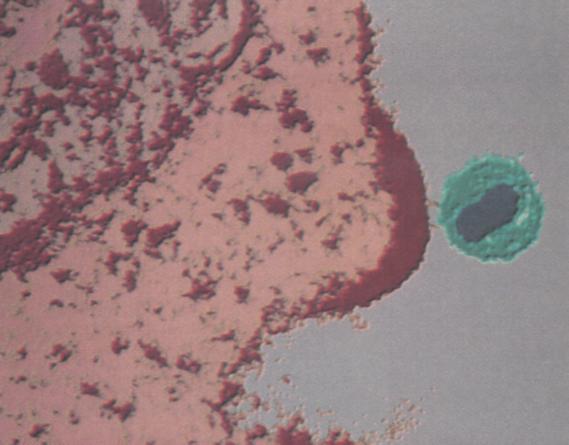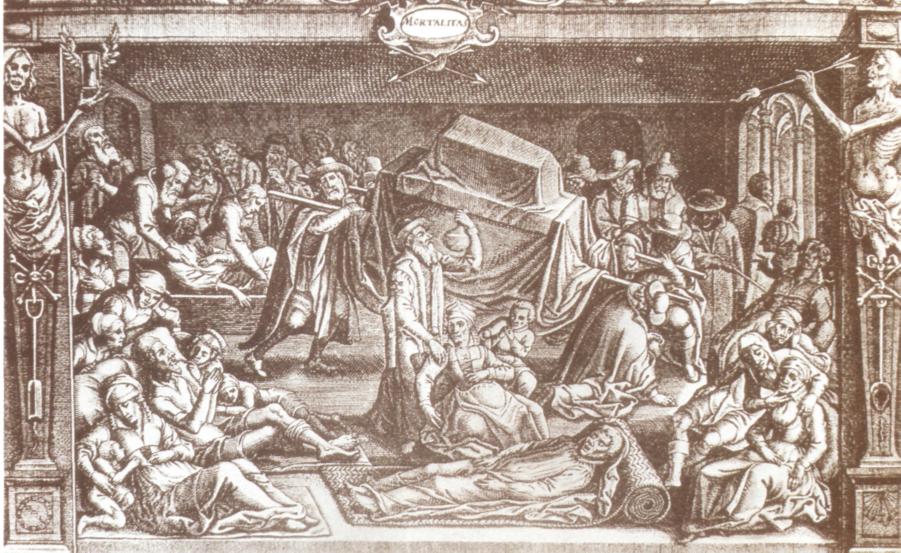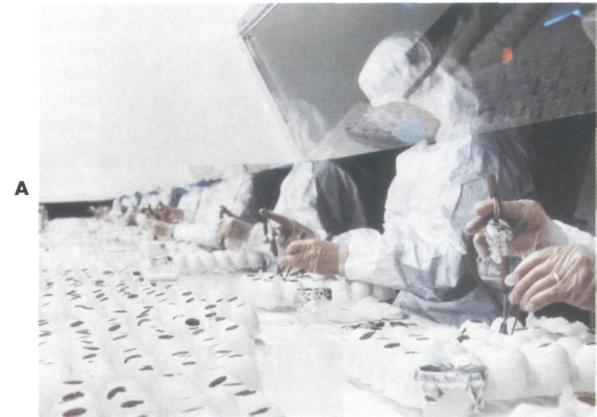
- •3 Science of Microbiology: Methods for Studying Microorganisms, 58
- •1 Unity of the Microbial World, 2
- •2 Diversity of the Microbial World, 24
- •3 Science of Microbiology: Methods for Studying Microorganisms, 58
- •4 Chemistry for the Microbiologist, 91
- •5 Cell Structure, 120
- •6 Cellular Metabolism, 157
- •7 Microbial Genetics: Replication and Expression of Genetic Information, 191
- •In this chapter we will:
- •12 Chapter 1 unity of the microbial world
- •Viruses can carry out the functions characteristic о living organisms only within living cells.
- •Importance of microorganisms to humankind
- •Importance of microorganisms to humankind 15
- •Importance of microorganisms to humankind 1 7
- •Importance of microorganisms to humankind 19
- •Importance of microorganisms to humankind 21
- •Importance of Microorganisms to Humankind (pp. 14-21)
- •Importance of microorganisms to humankind 23
Importance of microorganisms to humankind 19

intravenous needles. If behavioral changes do not occur, and if no cure or preventive is found, the impact of this disease on society will be staggering.
AIDS is just the latest major outbreak of disease to afflict humankind. All societies, both contemporary and ancient, have suffered from the ravages of dis-
eases caused by microorganisms (FIG. 1-10). Plague, tuberculosis, polio, smallpox, and various other diseases caused by microorganisms followed explorers, traders, missionaries, immigrants, or soldiers. Microorganisms have had a significant impact on the course of human civilization, including warfare, reli-

FIG. 1-10 During the Middle Ages there were major epidemics of plague. The disease followed the trade routes, as did the rats carrying the flea vectors infected with Yersinia pestis.
20 С H A P T E R 1 UNITY OF THE MICROBIAL WORLD
gion, migration of populations, art, agriculture, science, and technology. Major disease outbreaks, often plague, altered the course of history many times and contributed to the decline of empires. Widespread disease in ancient Athens led to that city-state's loss to its rival Sparta, during the Peloponnesian War. This prevented Athens from establishing a unified
Source of Cholera in London
In the mid-1800s a cholera epidemic was devastating London. John Snow, a British physician, sought to find the cause of the epidemic. He believed that the disease was spread by contaminated food and water, not by bad air or casual contact. Snow studied medical records of patients in the Broad Street area of London who had died of cholera. He discovered that most of the victims obtained their drinking water from the Broad Street water pump. He hypothesized that the water from the pump was contaminated with raw sewage containing the cause of cholera and that shutting off that source of water would end the cholera outbreak. The Broad Street pump was shut down and the number of cholera cases dropped dramatically. These important findings led the way to understanding the causes and modes of transmission of infectious diseases.
Greek empire. When the central government of the Roman Empire was weakened by the debilitating effects of plague, it could not consolidate its power over its vast empire and the influence of Rome declined.
Population patterns have often been determined by the actions of microorganisms. A fungal infection of potatoes in Ireland in the mid-nineteenth century caused widespread famine. This led to the migration of large numbers of Irish people to the United States. European settlers in the New World thought that the diseases with which they infected the natives were God's way of showing approval for their colonization. Entire tribes of native North Americans were eradicated due to outbreaks of smallpox. These outbreaks were sometimes initiated when Europeans gave them smallpox infected blankets.
Microorganisms have had major impacts on human health and society.
Beneficial Uses of Microorganisms
We have long depended on microorganisms for the production of many of the foods and beverages we enjoy. Even early societies produced beer, wine, and bread using microorganisms. We have built sewage treatment facilities where microorganisms are grown to degrade our wastes. We have also been able to greatly reduce the incidence of many diseases through the use of antibiotics and vaccines produced by microorganisms (FIG. 1-11). Indeed, the vaccines,


